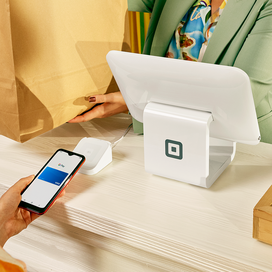Table of contents
This article was contributed by our friends at Supply Chain Dive.
Sole-source suppliers can be the bane of a buyer’s existence, ranking near the top of any supply chain risk matrix.
Whether it’s a fire, a work stoppage, a financial issue or the owner hanging a “gone fishing” sign on the door, a single event can shut down production and force procurement teams into a stressful and expensive hunt for alternative goods or services.
Taking these steps can help mitigate the risks involved in working with sole-source suppliers.
1. Pay attention to changing business conditions
Current pandemic-related supply chain disruptions have companies rethinking their supply chains.
Imagine if one of the container ships bobbing at anchor off of the Port of Long Beach held the sole-source parts that were keeping your factory from making customer deliveries. There would be an all-hands redesign effort to find additional sources of supply. Add in inflation, raw material scarcity, labor issues, stockouts and logistical constraints to the mix and the risk profile of the sole-source suppliers is off the charts.
A proactive approach to reducing sole-source risk should begin now.
2. Identify the scope of the problem
Create a database of your company’s sole-source suppliers to establish the extent of the problem.
Be sure to determine if they are indeed sole-source, or just single-source suppliers that have crept in the realm of sole source when they really aren’t.
What is a sole-source supplier?
There is often confusion over sole-source and single-source suppliers. Here’s a guide.
- A sole-source supplier is the only purveyor of a product or service. There are no other sources available.
- A single-source supplier is a dedicated source due to relationship management or other procurement strategies, but there are other suppliers who sell the same or equivalent product and/or service. The buyer has a choice of where to buy should they decide to exercise it.
In other words, there is no immediate choice with a sole-source supplier, but a choice exists for a single-source supplier.
Next, identify sole-source suppliers in the supply chains of all critical-path suppliers. This is certainly a harder task, but sole-source risk is even more difficult to identify and manage in the extended supply chain.
Finally, add these sub-tier suppliers to the soul-source database to see the potential for failure. This hidden risk is often overlooked.
3. Assess the risk
Develop a simple traffic light risk register and assign the threat level to your new database.
- A green indicator acknowledges the sole source but assumes that there is no current issue that would impact supply.
- A yellow indicator shows that the sole source presents some potential impact to existing operations, including quality, delivery, cost, inventory, or communication issues.
- A red indicator denotes an immediate and high-level risk that needs to be addressed.
This a good opportunity to assemble a cross-functional team to address sole-source risks across the company. Include engineering, finance, planning, and operations to openly discuss the impacts of risk and the cost to mitigate it. Once the group has an understanding of the impact of sole-source suppliers, it will be easier to address the next step.
4. Create a ‘no sole-source’ policy
In reality there will always be some sole-source suppliers due to proprietary products and services, legacy design, technology advancements, or a shrinking market that leaves just one supplier for a product.
It is a good policy to design products without sole-source components whenever possible. When a sole-source supplier is included in a product’s design, the policy should require managerial sign-off to acknowledge the risk and establish vigilance.
5. Invest in alternate sourcing
Consider the sole-source supplier from the sell side for a moment.
It’s an ideal sales environment for the supplier: eliminating competition, creating dependence, maintaining a healthy profit margin, and dictating the terms of the buyer-seller relationship. What sales professional wouldn’t want a dedicated print position and the term “buy from this supplier” etched into the bill of material?
It is at this intersection where procurement departments engage in battle with the sole-source supplier.
The sole-source supplier plays a role here. By maintaining excellent performance, the relationship ticks along a bit under the radar as the buyer is off chasing other problems. But when performance issues arise, the equation changes, as risk to continuity makes action necessary.
If the pain around pricing, delivery, or quality is high enough, a company can invest in an alternate sourcing scenario to find an additional supplier or two to reduce the risk. This process may also include a design review to potentially eliminate the sole-source item, and even the supplier, altogether.
The supplier needs to earn the right to maintain the sole-source position.
This article was written by Rich Weissman from Supply Chain Dive and was legally licensed through the Industry Dive publisher network. Please direct all licensing questions to [email protected].
![]()












